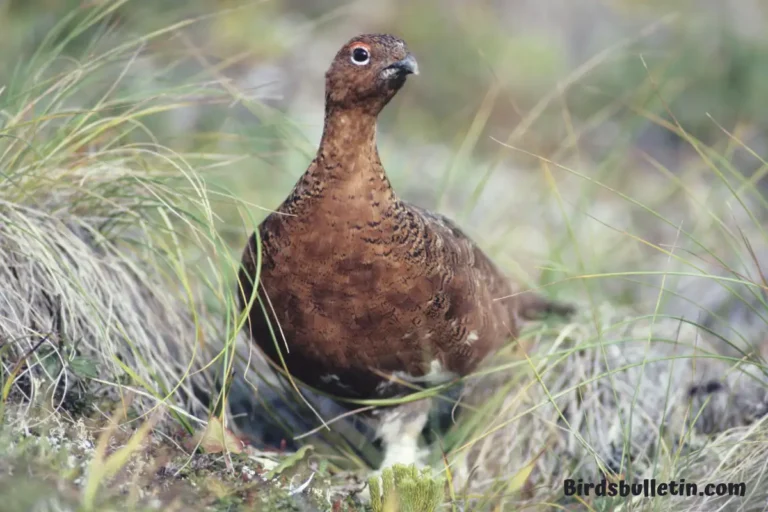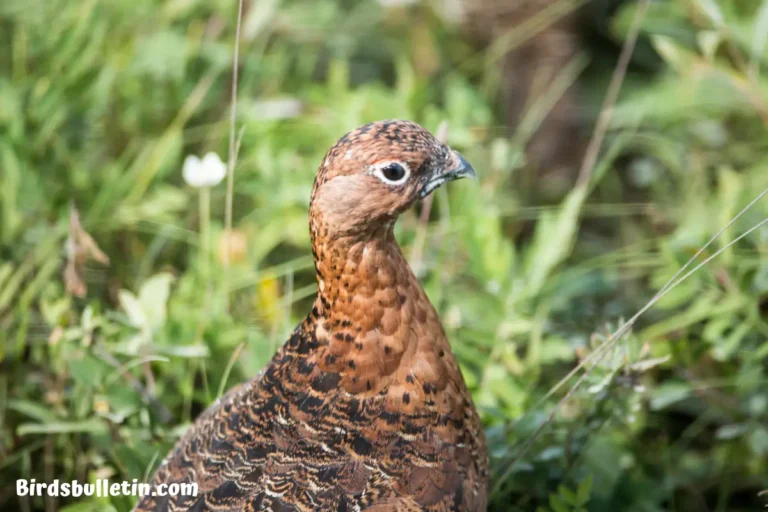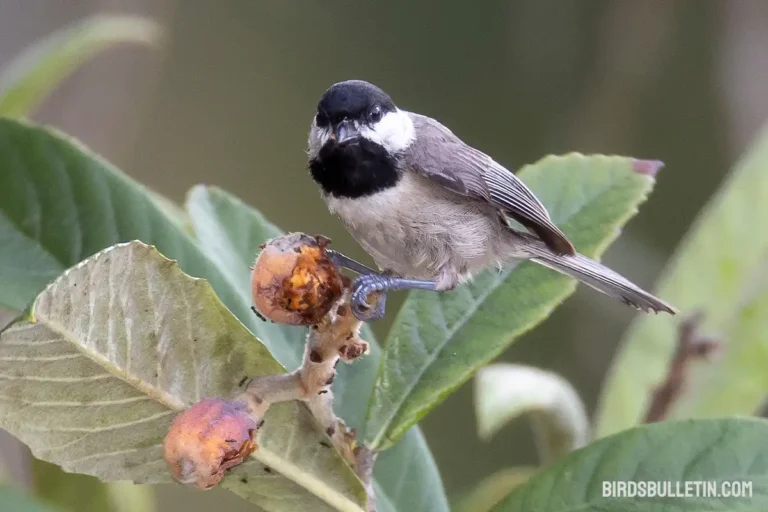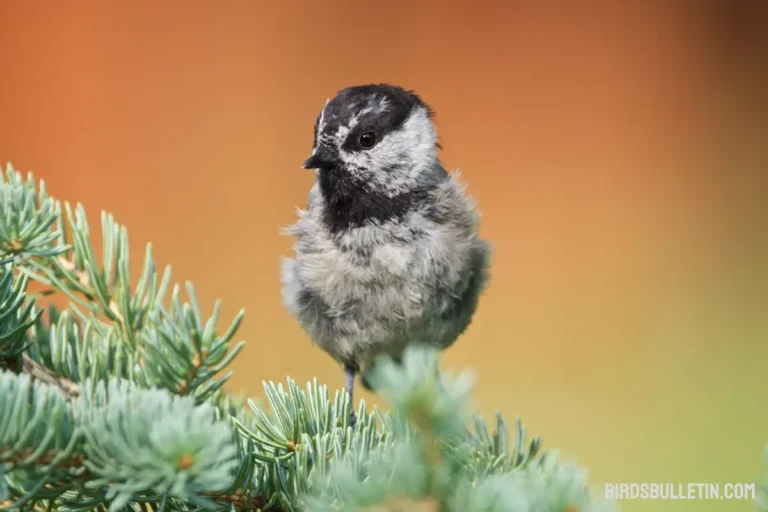Mountain Bluebird: Behavior, Migration, And More
The mountain bluebird is a small thrush belonging to the bird family Turdidae. With its bright blue plumage and melodious song, this species captures the imagination of many a birdwatcher.
But how much do you really know about this high-flying songster of mountain habitats? Let’s take a closer look at this charismatic bird.
Want to learn more about Birds Overview:
What does the Mountain Bluebird look like?
The mountain bluebird is easy to identify thanks to the male’s brilliant plumage. The entirety of the male’s body is a striking sky-blue, only a shade duller on the head. His wings and tail are a deeper blue.
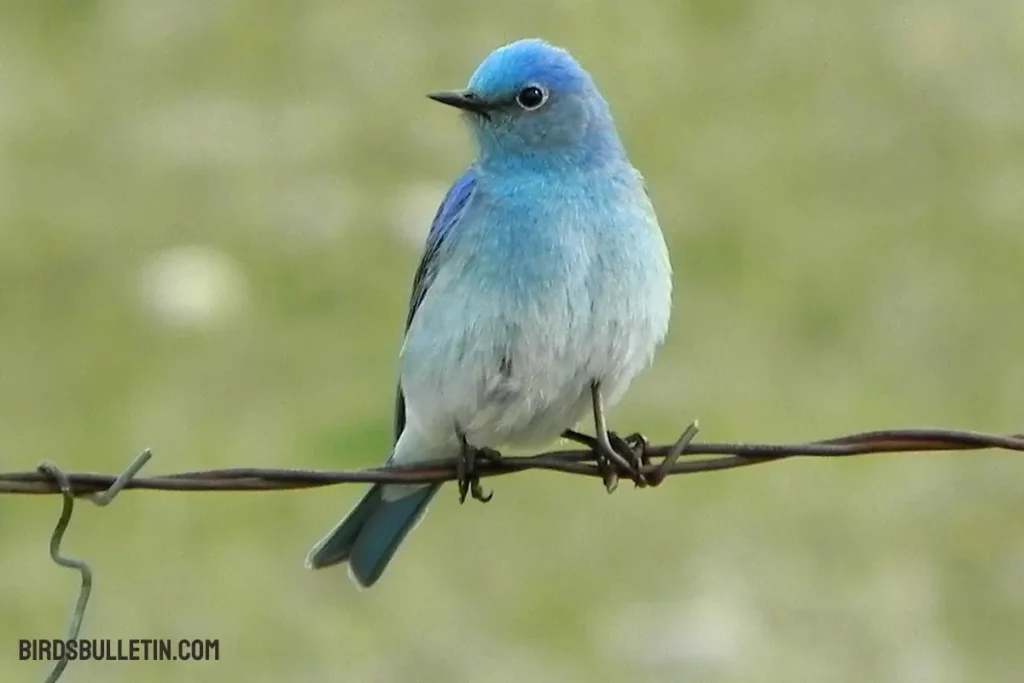
The female mountain bluebird is more muted. Her blue plumage takes on grayish tones, sometimes even appearing gray on the head and back. She sports blue wings and a tail, like the male. Both sexes have a thin pointed bill and white undersides.
In flight, look for the mountain bluebird’s rounded wings and tail. These bluebirds fly with a fluid, undulating motion. Their flight is direct and swift.
Another clue is their habitat. As their name indicates, mountain bluebirds live in open mountainous areas. Watch for them perching on trees, poles, fence posts, and wires.
Mountain Bluebird Profile
| Feature | Description |
|---|---|
| Scientific Name | Sialia currucoides |
| Alternative Names | Ultramarine bluebird, Arctic bluebird |
| Color | Males are bright blue on head, back, wings, and tail; females are duller blue-gray on head, back, dull blue on wings and tail |
| Lifespan | 6-10 years in the wild |
| Wingspan | 11- 14 inches |
| Weight | About 1 ounce |
| Size | 6-7 inches long |
| Diet | Insects like grasshoppers, beetles, ants, bees, wasps, caterpillars; also, spiders, snails, berries |
| Breeding Season | Starting from mid-April and extending through early August |
| Eggs | 4-8 pale blue eggs per clutch |
| Locations | Open mountain forests and meadows in western North America |
| Threats/Predators | Habitat loss, pesticides reducing insect prey, competition/predation from European starlings |
| Prey | Insects, spiders, snails, berries |
Is The Mountain Bluebird A State Bird Or Symbol?
The Mountain Bluebird is the official state bird of Idaho and Nevada. Its selection for this designation reflects its aesthetic appeal as well as its association with the mountains and high country of the western states.
The Mountain Bluebird has been poetically described as a ‘living sky-blue jewel’ of the mountains. Its likeness appears on license plates, signs, and other symbols in these states.
Is The Mountain Bluebird Considered A Distinct Species Or Subspecies?
The Mountain Bluebird is considered a distinct species, Sialia currucoides. Some older sources classified it as a subspecies of the Western Bluebird.
However, modern taxonomy recognizes it as a unique species based on differences in morphology, behavior, genetics, and vocalizations.
What Is The Current Population Trend For The Mountain Bluebird?
Mountain bluebird numbers are declining across portions of their range, but are stable and even increasing in other areas.
Their estimated global breeding population is approximately 6.8 million birds. Breeding Bird Survey data from 1966-2019 shows a survey-wide population decline of 18%. However, during just the past decade (2009-2019), their numbers stabilized across survey sites.
In the Pacific Northwest, breeding populations are declining. But increases have occurred in the central Rockies, Sierra Nevada, and northern Great Plains.
Expanding bluebird nest box programs across North America have aided populations. Mountain bluebird survival rates at nest boxes are high, averaging around 70%. More nest boxes provide critical breeding spots in tree-sparse areas.
What Are The Migration Patterns Of The Mountain Bluebird?
Mountain bluebirds migrate relatively short distances compared to many other North American songbirds. They spend their summers breeding at mountain elevations and winter at lower elevations.
They start leaving their breeding grounds in late summer. By October, most mountain bluebirds have already arrived on their wintering grounds. Their winter range extends south of their breeding range into the southern U.S. and Mexico.
Come February and March, mountain bluebirds start their northbound spring migration back to breeding areas. They time their arrival in breeding areas with the emergence of insect prey in late winter.
A few mountain bluebirds, mainly in California and the Southwest, remain in the same area year-round and do not migrate.
What Are Some Key Behaviors And Traits Of The Mountain Bluebird?
Here are some behaviors and traits of Mountain bluebirds:
- Forages for insects in open terrain by perching on low shrubs and swooping down to catch prey. Also eats berries.
- Males sing warbling songs and make “chur” calls to defend nesting territories.
- Nest in cavities in trees, stumps, rock crevices, and nest boxes – will reuse nest sites in subsequent years.
- Males help build nests, and both parents feed nestlings.
- Can have 2-3 broods per mating season from April-August.
They are active, acrobatic hunters with a gentle temperament, sometimes allowing close approach by humans. Their beauty and adaptations make them a favorite species to observe.
How Do Mountain Bluebirds Interact With Humans?
Many mountain bluebirds in North America nest in backyard nest boxes put up by people, rather than natural tree cavities. This shows a high degree of tolerance for human presence.
Mountain bluebirds may also visit backyard bird feeders, especially in winter. They like mealworms and other meat-based bird foods. Offering such foods can encourage mountain bluebirds to become regular feeder visitors.
Their bright colors, song, and relative friendliness make mountain bluebirds a favorite backyard bird for many. Seeing them regularly at nest boxes or feeders provides an enjoyable connection with nature for people.
What Conservation Issues Affect Mountain Bluebirds?
The availability of nesting cavities limits mountain bluebird numbers in many areas. Bluebird nest box programs help provide the critical cavities they need. Maintaining an open habitat is also key. Tree encroachment reduces available foraging areas.
Pesticides reduce insect prey populations which can limit mountain bluebird food supplies. The use of pesticides in areas where mountain bluebirds breed should be avoided. Predation and competition for nest sites from non-native bird species like European starlings also impact bluebird populations.
Climate change could affect mountain bluebirds in the coming decades too. Their high mountain habitat may decline, forcing shifts in their range and distribution to compensate.
What Laws Protect Mountain Bluebirds?
In the United States, mountain bluebirds receive legal protection under the Migratory Bird Treaty Act. This 1918 law prohibits harming or killing any species covered under one of four international treaties on migratory birds. The mountain bluebird is a protected native species under this act.
Internationally, the mountain bluebird is considered a species of Least Concern on the IUCN Red List of Threatened Species. This indicates it faces no immediate major threats to its overall population numbers or habitat.
Frequently Asked Questions
01. What predators threaten Mountain Bluebirds?
Common predators include snakes, squirrels, chipmunks, weasels, blue jays, and tree swallows. Nest boxes help protect against many predators.
02. How long do Mountain Bluebirds live?
The average lifespan in the wild is 2-3 years. The record longevity is 10 years for a banded wild bird. With protection from hazards, they may live longer.
03. Do Mountain Bluebirds migrate at night?
Yes, like many other songbirds, they migrate after nightfall. Their migration flights may cover hundreds of miles between resting periods.
Do mountain bluebirds mate for life?
No, mountain bluebirds do not mate for life. They form new pair bonds each breeding season. However, a male and female may mate together in consecutive years if they return to the same breeding area.
Final Word
With its dazzling blue plumage set against mountain skies, the Mountain Bluebird is a jewel of the western states. This songbird has captivated human interest with its beauty, symbolism, and accessibility.
Maintaining its habitat and native ecosystems will ensure the Mountain Bluebird continues to migrate and flourish amidst North America’s peaks. When glimpsing these sky-blue birds winging overhead, we are reminded of nature’s wonder and the importance of conservation.
References
- Cornell Lab of Ornithology. Mountain Bluebird Overview. https://www.allaboutbirds.org/guide/Mountain_Bluebird
- Audubon Society. Mountain Bluebird Facts. https://www.audubon.org/field-guide/bird/mountain-bluebird
- US Fish & Wildlife Service. Birds of Conservation Concern. https://www.fws.gov/program/migratory-birds/species


